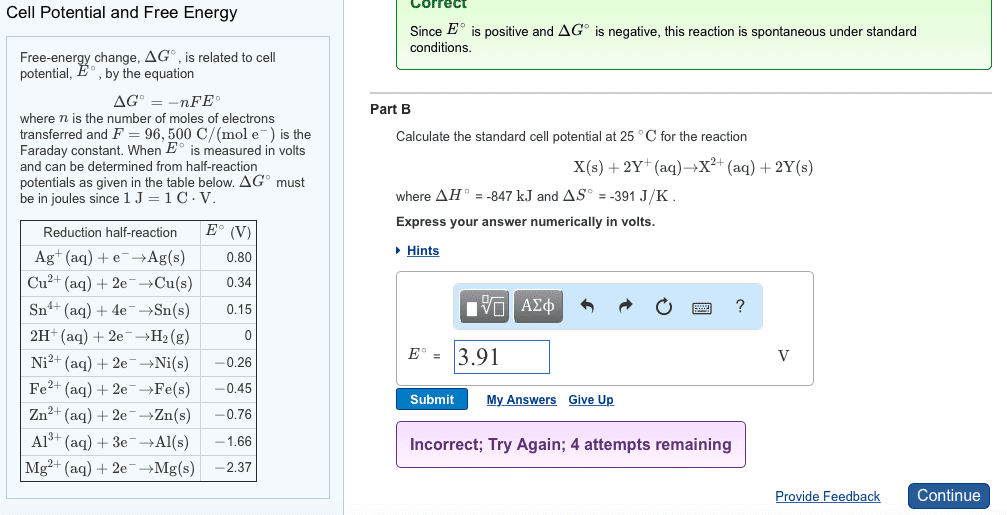CHEM 201 Lecture Notes - Lecture 40: Nernst Equation, Negative Number
Document Summary
Nernst equation: e=e - rtnf lnq or e=e - 0. 0257 vn. *r(8. 314 j/k) and f(96,485) are constants and n is the number of moles of electrons transferred in the balanced equation (use the half-cell potentials table: as always, for standard conditions, q=1, lnq equals zero, and e= e . If q<1, then lnq is negative: you are subtracting a negative number from e , and this will increase e such that e> e . If q>1, then lnq is positive: you are subtracting a positive number from e , and this will decrease e, such that e< e . This gives e= e even thought the conditions may not be standard: to increase the potential of a cell, you could. If g is negative and the initial concentration gives q<1, lnq will also be negative. If e is positive and the initial conditions give q<1, lnq will also be negative.


